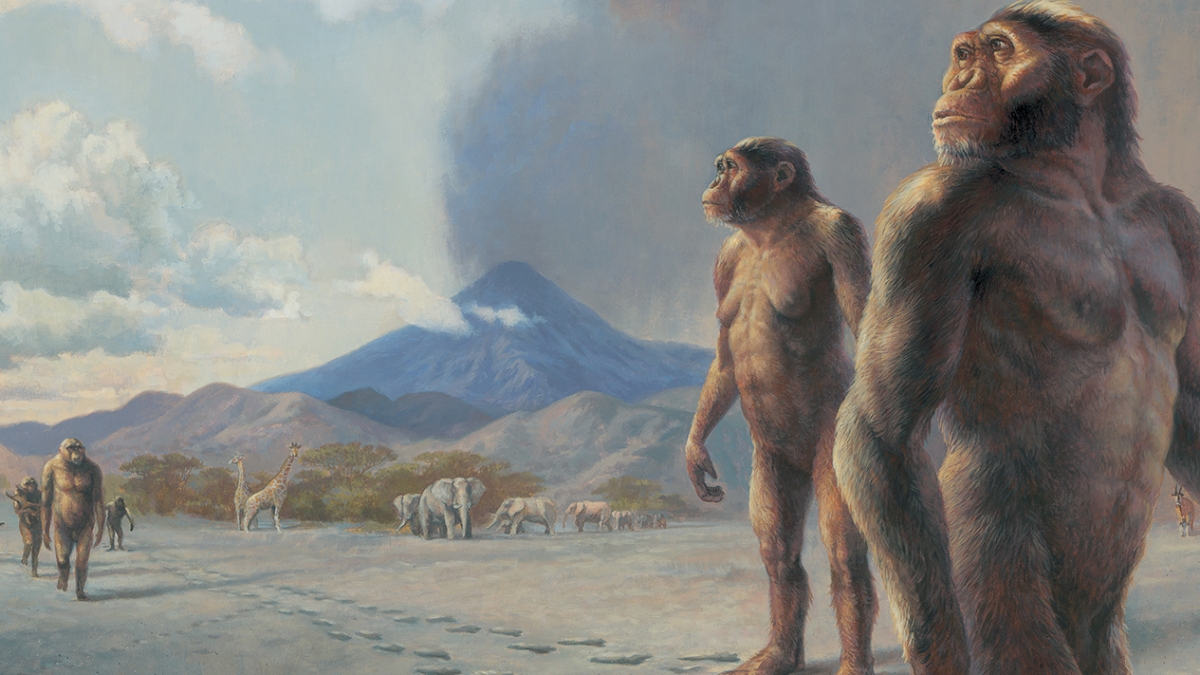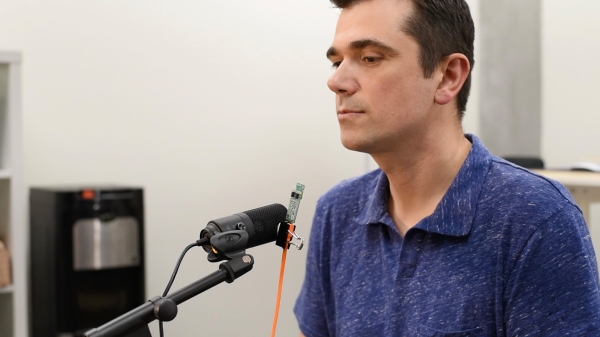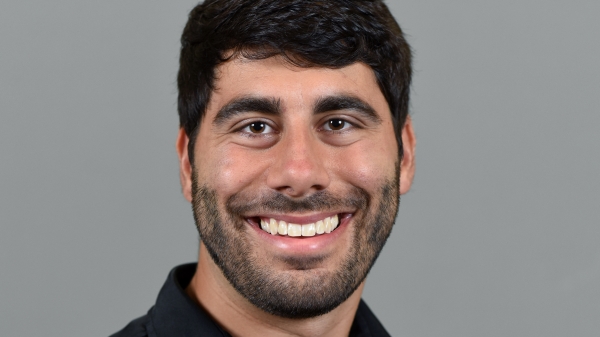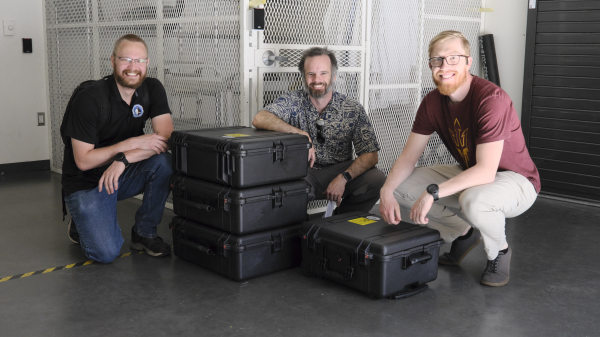'Lucy' discovery turns 50: 'A Year for Human Origins'
Fossil continues to impact human origins science

Artistic rendering of Australopithecus afarensis at Laetoli. Image by Michael Hagelberg/courtesy the Institute of Human Origins.
This year, the Arizona State University Institute of Human Origins is celebrating the 50th anniversary of the discovery of the fossil skeleton “Lucy” — one of the most significant anthropological findings of our time.
By reflecting on the importance of that discovery, the institute aims to reignite a global interest in how we “became human,” promoting the importance of connecting our human past to the planet's global future.
“A Year for Human Origins” will bring awareness of our species’ success — through innovation, cooperation and a shared tenacity for survival — as residents of Earth who started in Africa millions of years ago.
Key events
January: Donald Johanson returns to the Lucy discovery site in Hadar, Ethiopia. Johanson will also visit the labs at the National Museum of Ethiopia, where the original fossil bones are held.
April 4, 5 and 6:
• The Bill Kimbel Distinguished Lecture, featuring Donald Johanson, at the Mesa Arts Center.
• A gala dinner: “An Evening with Don and Lucy.”
• A daylong symposium: "The Impact of Lucy on Human Origins Science,” featuring the top paleoanthropologists in the world.
Monthly lecture series by IHO scientists, in-person on the ASU Tempe campus, and posted on YouTube for public viewing.
Nov. 1: Svante Pääbo Lecture, Walton Center for Planetary Health. Pääbo is the 2022 Nobel Prize awardee in physiology and professor of genetics and evolutionary biology, Max Planck Institute for Evolutionary Anthropology.
November: Climatic public lecture in New York City prior to the 50th anniversary.
Find information about the entire year’s events and news at iho.asu.edu/Lucy50.
Discovery
Fifty years ago, only a few years after humans’ first steps on the moon, the fossil of the first human ancestor who reliably walked upright on two feet was discovered by a young paleoanthropologist, Donald Johanson, in the dusty landscape of the Afar Rift Valley of Ethiopia.
Popularly known as “Lucy” because of the discovery team's appreciation of The Beatles’ song “Lucy in the Sky with Diamonds,” the 3.2-million-year-old fossilized skeleton remains the most complete representative of human ancestors who were adapting to life on a changing landscape.
Adaptation and extinction
News of the Nov. 24, 1974, discovery sparked a worldwide interest in human evolution and created a tremendous controversy in 1978 when an entirely new species — Australopithecus afarensis — was announced and changed how we thought about our own history on the planet.
Since Lucy’s discovery, we have learned that many variations of bipedal creatures thrived — and then went extinct — before and alongside Lucy and her descendants.
Lucy’s species survived for almost 1 million years before the pressures of environmental changes likely drove her species to adapt and evolve. Those changes paved the way for the origin of our genus Homo, which became better equipped with unique adaptive strategies, including technology.
Science and our place in nature
Throughout 2024, IHO will be engaging ASU community members, friends and supporters, and national and international academic and K–12 educational communities, with events, activities and resources to not only honor the discovery of Lucy but also forward how understanding our human origins is essential to our future on Earth.
One highlight of the year will be a daylong symposium on the impact of Lucy on the science of human origins, featuring the top paleoanthropologists in the world.
A monthly themed lecture series by IHO scientists will be available online with curricular materials to assist middle and high school science and social studies teachers in integrating this often undertaught subject into curriculum they are already teaching.
In the fall, Nobel laureate Svante Pääbo will visit ASU to talk about ancient DNA.
Finally, Johanson, founding director of the Institute of Human Origins and Virginia M. Ullman Chair of Human Origins with the School of Human Evolution and Social Change, will be the featured speaker at several events in Phoenix, New York City, Europe and Africa to engage supporters in Lucy’s story and illuminate his sense of where humanity should be turning to save ourselves from extinction.
“Lucy and those early hominins were integrated into and closely tied to the landscape, to the natural world. Today, humans have largely lost an understanding of our connection to the natural world,” Johanson said. “We need to begin making important decisions about how we treat the natural world so that we will leave descendants who will look back on their ancestors.”
Video courtesy the Institute of Human Origins
This January, Johanson will return to the Lucy discovery site in Hadar, Ethiopia, and visit the lab at the National Museum of Ethiopia, where the ancient fossil bones of “Dinknesh” — Lucy’s Ethiopian name, meaning “you are wonderful” — are housed.
“Lucy has been stirring the imaginations of people interested in human origins since her discovery 50 years ago,” said Yohannes Haile-Selassie, director of the Institute of Human Origins and Virginia M. Ullman Professor of Natural History and the Environment in the School of Human Evolution and Social Change. “Understanding our ancient origins through skeletons like Lucy’s provides important lessons for modern humans today. The past informs the future.”
Connecting the human past to the global future
The ASU Institute of Human Origins is one of the preeminent research organizations in the world devoted to the science of human origins.
Its scientists are global collaborators on the forefront of new paradigm-shifting discoveries and novel approaches to solutions of pressing and newly emerging scientific questions about human existence over deep time. Those include how humans adapt to a changeable planet, what DNA research reveals about our origins, the genetic bases for human behavior, and, perhaps most important of all, how we have used our innate cumulative curiosity, ingenuity and creativity to ensure our survival and to thrive as a species.
“The discovery of Lucy 50 years ago has led to groundbreaking research at the intersection of the human experience, cultures and societies, and scientific exploration. We are fortunate to have a prominent research center dedicated to that work at Arizona State University and specifically The College of Liberal Arts and Sciences,” said Patrick Kenney, dean of The College and executive vice provost at ASU.
“The upcoming celebration hosted by the Institute of Human Origins is an opportunity to not only reflect on the significance of Lucy on current human origins science but also investigate how we can leverage human ingenuity and innovation to set our future generations up for success,” he said.
“All humans have a common African ancestry, a common destiny and a shared responsibility," Haile-Selassie said. “As stewards of Earth, we have an opportunity to actively promote a balance with nature grounded in science with an aim to protect and preserve our species and our planet’s health.”
More Science and technology

ASU researchers develop special microphone to verify human speech
Deepfakes have become a large societal concern with the advent of video and audio content generated by artificial intelligence, or AI. A deepfake is a convincing imitation that blurs the lines…

Leading students toward a future of renewable energy
Nicholas Rolston, assistant professor in the School of Electrical, Computer and Energy Engineering, one of the Ira A. Fulton Schools of Engineering at Arizona State University, has found his passion…

SPARCS mission spacecraft bus delivered to ASU for final assembly
The Arizona State University team that is building the NASA-funded Star-Planet Activity Research CubeSat, or SPARCS, cleared a major milestone this week — receiving its spacecraft bus at the School…